Climate Inaction is Fiscally Irresponsible, Says GAO

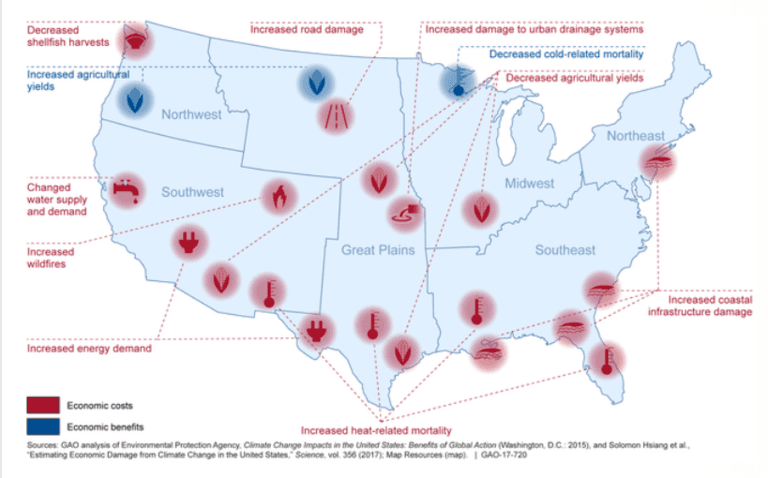
The well-used expression "climate change" may have been relegated to the dustbins of history by the Environmental Protection Agency last August, but when it comes the opinions of scientists, clergy and kids, it's still got traction. Especially when it comes to discussing what the Trump administration has yet to do.
Government Accountability Office
In October, about a week after the Napa, Calif. fires started, the Government Accountability Office sent Trump a report. Its message -- all 45 pages worth -- was clear: Climate change is costing the U.S. government money. Too much money.
According to the GAO's figuring, climate-related events like the hurricanes and tropical storm that had only recently pummeled Texas, Florida and Puerto Rico and the fires that have ravaged California are costing the U.S. government billions. And that cost of course is being passed on to taxpayers.
"As an initial step in establishing government-wide priorities to manage climate risks, we recommended that the Executive Office of the President use information on economic effects to help identify significant climate risks and craft appropriate federal responses," the GAO said. To make its point, the agency cited more than 20 different ways that climate change had already impacted the economy.
And if that polite but distracting missive wasn't enough, the Democratic senators who had initially ordered the report, Sen. Maria Cantwell (Wa.) and Susan Collins (Maine), were determined to make sure the issue was overlooked.
“The Government Accountability Office — if you will, the chief bean counter — is basically telling us that this is costing us a lot of money,” Cantwell told the New York Times. “We need to understand that as stewards of the taxpayer that climate is a fiscal issue."
The GAO's findings incorporate the results of more than 25 interviews with climate change scientists and 30 independent studies. Its conclusions focus in particular on two national studies, one of which is overseen by the Environmental Protection Agency.
The GAO, which is best known for statistical precision, seems to have made climate change a focal concern. Since the release of that report, it has released several other recommendations urging agencies to step up their climate mitigation efforts.
Catholic Climate Covenant
Nor is the GAO alone in those efforts. In November, a contingent of 161 Catholic organizations spoke up, urging the president to take a leadership role in addressing climate change. The group, which includes colleges, universities, health care providers and voters from across the country, also urged Congress to take a more prominent role in fighting global warming issues.
"On behalf of people who are poor and vulnerable and future generations, we especially ask that you act based upon the best available climate science," the Catholic Climate Covenant letter states.
The organizations want the president to back a Senate bill that would authorize $10 million to the UN Framework Conventions on Climate Change (UNFCCC), an agency that Trump pulled the US out of last spring. They also want the government to reengage with the UNFCCC and support the Green Climate Fund.
Kids' challenge to the Trump administration
But the President's most formidable opponent on climate change may be his very smallest.
On Monday a U.S. appeals court in San Francisco began considering an effort by 21 young people, ages 10 to 21, to sue the Trump administration for failing to act on climate change and protect their interests.
The suit, Juliana v. the U.S., which was initially filed in the U.S. District Court for the District of Oregon in 2015 against the Obama administration, states that "through the government's affirmative actions that cause climate change, it has violated the youngest generation’s constitutional rights to life, liberty, and property, as well as failed to protect essential public trust resources."
A trial date was set earlier this year for February, but the Ninth Circuit Court of Appeals halted the case after the Justice Department attempted to block the case.
The government however, is arguing that the suit is based on "utterly unprecedented legal theories" and "unbounded" research. Federal attorneys argue that the suit would be "burdensome" to the administration and would keep it from doing its duties it it were to proceed.
Should the suit be allowed to go ahead, Trump may face an even greater challenge in this lawsuit than his predecessor. The plaintiffs may be able to argue that many of Trump's executive decisions could have a direct impact on the country's ability to slow global warming, both at home an in partnership with other countries.
The judges must now decide on whether to intervene or permit the case to proceed. They are due to announce a decision within the next few months. Experts have pointed out that if the case goes ahead, the administration may ultimately try again to argue that the suit is onerous -- but this time because it would require the government to unearth years of climate studies and data that it isn't prepared to release to the courts.
Image: Government Accountability Office
American Petroleum Institute Launches Voluntary Carbon Reduction Program


For advocates who believe public lands should be largely preserved and maintained for recreational use, last week was jarring.
First, the White House and Interior Department took the unprecedented step to roll back federal protections for five national monuments. And as widely reported, the Bureau of Land Management (BLM) announced it would delay the implementation of an Obama Administration rule that sought to limit methane leaks from drilling operations conducted on federal lands.
While methane only comprises about 10 percent of all U.S. greenhouse gas emissions in 2015, estimates suggest it is at least 25 five times more potent than carbon upon its release into the atmosphere.
Now the oil and gas industry, led by the American Petroleum Institute (API), is launching a voluntary “Environmental Partnership” that seeks to reduce emissions from natural gas extraction.
Under this plan, participating companies would implement technologies that would reduce the leaks of greenhouse gasses such as methane; update or retrofit equipment while stopping practices known to contribute to methane leaks; and report such progress on an annual basis.
“The industry has a long record of implementing technology and practices that have proven to increase efficiency and reduce the environmental footprint of operations,” said Jack Gerard, President and CEO of API in a public statement. “In establishing the Environmental Partnership, the natural gas and oil industry is working together to promote the most effective programs and opportunities to improve environmental performance throughout our operations.”
The API had long criticized the Obama era’s BLM methane rule as “redundant, technically flawed and unnecessary.” Instead, the energy trade group says the expertise of its member companies best positions the industry as a key player in helping the U.S. reduce its environmental impact.
Companies that are participating include Shell, Occidental Petroleum, BP, XTO Energy (a subsidiary of ExxonMobil), Chesapeake Energy, Chevron, Marathon Oil and Total.
This is the first time in its almost 100-year history that the API has embarked on any kind of program to curb emissions. What’s notable about the announcement, however, is that the industry is making clear this has nothing to do with “climate change.” This agenda is all about the “environment” instead.
The program starts on January 1, and again, it is completely voluntary. The API has not set any emissions targets, but only asks companies to report on their progress. Contrast that effort with those of many of the world’s largest companies, many of which have committed to science-based climate action targets. There is also no penalty for non-compliance, though an API official told Axios that one outcome “would be to take names off the new website” that is soon targeted to time with this program’s launch.
API’s Environmental Partnership has failed to impress at least one environmental NGO. Critics say the effort is weaker than a voluntary program headed by the Environmental Protection Agency, gives participants up to five years to reduce any emissions and is very selective about what natural gas extraction sites will actually undergo any leak detection monitoring.
“We welcome genuine efforts by industry to curb its methane and other air pollution, but this current effort falls far short of what’s needed and possible. And worse—it distracts from other efforts to actually address the problem,” said Brianna Mordick, a senior scientist with the Natural Resources Defense Council in a recent blog post. “If API and the oil and gas industry are truly concerned about this problem, we urge them to support the federal methane regulation efforts underway instead of attempting to undermine them.”
Image credit: SkyTruth/Flickr
Cargill and WRI Map Out a Global Cocoa Footprint


In their quest to halt deforestation tied to the global chocolate industry, commodities giant Cargill and environmental NGO World Resources Institute (WRI) announced last year that they would work closely together in an effort to preserve forests. The goal was to map out Cargill’s supply chain in order to improve the management of the company’s risks related to water supplies and forests.
According to a recent update from Cargill, the results so far have ended with the mapping of 2.3 million acres of its cocoa supply chain across three continents. The company, which says it has operations in approximately 70 countries, says it sources cocoa from Brazil, Cameroon, Côte d’Ivoire, Ghana and Indonesia.
Adopting the forest monitoring system developed by Global Forest Watch, the analysis of Cargill’s cocoa sourcing revealed that 6 percent of the area tied to its supply chain experienced tree cover loss between 2008 and 2014. The company said it will continue to map out its cocoa sourcing while updating risk assessments in order to prevent additional deforestation. At some point next year, Cargill promises to publish a report of new findings related to cocoa’s impact on local ecosystems.
Cargill’s renewed focus on its cocoa supply chain is a win for WRI, which has long advocated for better stewardship of lands used to harvest cocoa. Two years ago, the nonprofit suggested that deforestation tied to commercial cocoa production actually doubled chocolate’s carbon footprint. WRI researchers have urged cocoa growers to consider “agriculture-driven restoration” plans, including the planting of cacao trees on lands already degraded. Paired with sustainable agriculture practices such as the planting of more shade trees, WRI insists such tactics can help improve cocoa production while mitigating climate change risks.
This announcement follows the footsteps of major chocolate manufacturers worldwide. In March, companies including Mars, Hershey, Nestlé and Mondelēz pledged they would cooperate more to halt deforestation and forest degradation. The work of another NGO, the World Cocoa Foundation (WCF), has identified the challenges and needs of almost 150,000 cocoa farmers across West Africa. WCF’s survey could help companies find opportunities to work on a wide range of issues, from women’s empowerment to scaling up sustainable agriculture practices.
Cargill is also working with WCF. Earlier this year, the company became one of the first signatories to the Cocoa & Forests Initiative (CFI), a partnership between the cocoa industry and advocacy groups seeking to stop the conversion of forests into lands for cocoa production.
The goal of these partnerships is to generate updated maps that will boost knowledge of socio-economic and land-use data on cocoa farmers worldwide. As the maps will eventually be publicly disclosed, Cargill insists that this increased transparency is a way ito show it is committed to sustainable development. Furthermore, these steps could help secure the future of cocoa production by allowing the entire agribusiness sector to access this data so they can ensure their supply chains are not causing deforestation.
Image credit: Cargill
A Green Marketing “Wild West”: Greenwashing in the Beef Sector


By Jonathan Gelbard, Ph.D
As a grassland scientist and sustainable business advisor, I’ve been working for years to help define sustainable beef production and develop incentives for ranchers, farmers and other supply chain stakeholders. What I’ve learned during this journey is that while there are exciting advances occurring in the beef sector, sustainability marketing is a Wild West of (mostly unintentional) greenwash. The language on beef retailer and producer websites often features vague, unsubstantiated sustainability-related claims. This results in confusion about what these claims mean in terms of measurable, verifiable benefits for the health of ecosystems, people, and livestock.
There are two positive trends. First, major retailers (e.g., supermarkets, restaurants, brands) are pursuing marketing opportunities to appeal to consumers who seek "sustainable" food that they can trust to be less impactful to our environment and public health. Rising demand for verified sustainable beef is a potentially game-changing development. As famed sustainable farmer Joel Salatin, emphasized, “for ecological farming to thrive, we need a cultural shift to ecological eating.” Many in the sustainability community believe that working together with institutional buyers to achieve this goal will incentivize transitions to more sustainable production practices. The idea is to drive more business to both the best-performing producers and those continuously improving – generating a “race to the top”.
A second important development is the rise of a small, growing cadre of “regenerative” ranchers.
Despite these two positive signs, the vast majority of the beef sector is not yet on the path toward sustainability. Globally, it is lagging well behind the other top drivers of deforestation and environmental degradation, including palm oil, timber/pulp, soy and sugar. This lag is glaringly evident in the marketplace, where confusion reigns. Current practices for marketing sustainable beef make it almost impossible for beef buyers to distinguish credible sustainability leaders, recognize the scope of benefits they are generating for people and planet, and reward them with more business.
Sins of Greenwash in Beef Marketing
What are general types of greenwash to look for in the beef sector? I used UL’s Seven Sins of Greenwashing to categorize examples:
- Sin of the Hidden Trade-Off: “A claim suggesting that a product is ‘green’ based on a narrow set of attributes without attention to other important environmental issues.” Grass-fed and pasture-raised beef, for example, is free of the disturbing impacts of industrial livestock production. However, unless it is produced on grazing operations that are independently certified or verified to be well-managed, they may still be overgrazed, polluting streams, and harming wildlife.
- Sin of No Proof: “An environmental claim that cannot be substantiated by easily accessible supporting information or by a reliable third-party certification.” Many beef marketers claim that their beef is “sustainable” or “regenerative” without providing evidence such as a reliable third-party certification.
- Sin of vagueness: “A claim that is so poorly defined or broad that its real meaning is likely to be misunderstood.” Again, hello to those marketing “sustainable” and “regenerative” beef. What do you mean, specifically?
- Sin of worshiping false labels: “A product that, through either words or images, gives the impression of third-party endorsement where no such endorsement exists.” One example is beef marketers claim that their beef is produced on “sustainably operated ranches”. Other brands tout use of Holistic Planned Grazing, which conveys that producers used an increasingly popular management framework. In itself, that does not verify whether these ranches are generating environmental and other benefits. How can you prove it?
- Sin of Lesser of Two Evils: “A claim that may be true within the product category, but that risks distracting the consumer from the greater environmental impacts of the category as a whole.” For example, beef may come from cattle raised without growth hormones, but that claim distracts the consumer from far more serious environmental and public health impacts of beef production.
- Sin of Fibbing: “Environmental claims that are simply false”. I’ve observed this on more than one occasion. In fact, seeing it firsthand inspired my work developing solutions to help buyers recognize credibly more sustainable sources!
Greenwash sells the real regenerative players short
It’s not fair to more sustainable ranchers (or to buyers trying to use their purchasing power to support sustainability) if greenwashers get the same market credit without generating real triple bottom line benefits. As the International Standards Organization (ISO) states, “those producers who do improve their environmental performance are entitled to be reassured that they can accurately pass this information on to customers without being undermined by competitors seeking to gain the same commercial advantage without doing anything to improve performance. In short, there needs to be a level playing field.”
Greenwash Poses Legal, Reputational and Business Risks to Beef Producers and Brands
There are also serious risks to beef marketers who get caught greenwashing. For example, the U.S. Federal Trade Commission (FTC) Green Guides reveal that key terms beef marketers are using could land them in legal hot water. The Guides require that, for general environmental benefit claims like “sustainable” and “regenerative”, “it is deceptive to misrepresent, directly or by implication, that a product…offers a general environmental benefit”; and, “in many cases, such claims likely convey that the product…has specific and far-reaching environmental benefits and may convey that the item…has no negative environmental impact. Because it is highly unlikely that marketers can substantiate all reasonable interpretations of these claims, marketers should not make unqualified general environmental benefit claims.”
Furthermore the Guides advise that, “to avoid deception, marketers should use clear and prominent qualifying language that limits the claim to a specific benefit or benefits.” There can be damaging legal (and thus reputational and business) consequences for brands making unsubstantiated claims.
Which brands might be vulnerable to these and other greenwash-related risks? How can they make their claims in a more accurate, transparent manner? In my next post, I’ll constructively dig deeper into the limits of some of the most common green marketing claims in the beef sector.
Jonathan L. Gelbard, Ph.D. is Principal and Senior Conservation Scientist at Conservation Value Solutions. As a researcher, writer, speaker, and advisor, he digs deep to identify root causes of problems, and catalyzes transformative solutions. Dr. Gelbard was Senior Scientist at the Grasslands Alliance, a partnership between NGO’s, certifiers and ranchers that developed and piloted a comprehensive certification standard for U.S. and Canadian beef cattle and bison grazing operations. The Grasslands Alliance is currently fundraising to support its development of certification and continuous improvement programs.
Ecosurety Adds Over 1,600 New Battery Recycle Points To UK’s Recyclenow.com Tool
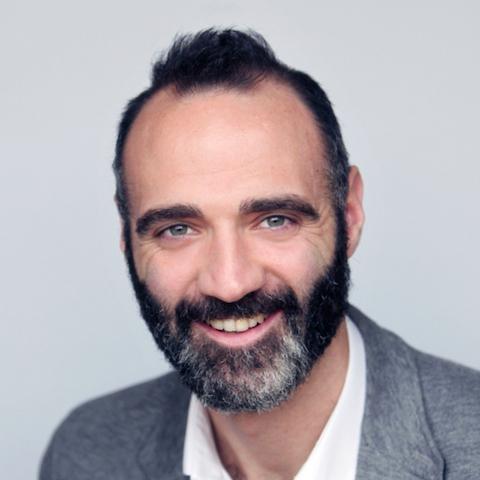

Ecosurety, the UK’s leading resource efficiency specialist with services including environmental compliance and intelligence reporting, has added more than 1,600 battery collection points to www.recyclenow.com’s Recycling Locator tool. These newly added drop-off locations have been provided by some of Ecosurety’s largest members as well as collection partners that include Currys PC World.
With the Recycling Locator tool informing consumers where they can recycle specific items in their local area, the additional locations are touted as making it easier for consumers to know where they can recycle spent or unwanted batteries, and help the UK increase its battery recycling rate.
Robbie Staniforth (pictured), commercial manager at Ecosurety, and one of the instigators of the plan to add additional recycle points, commenting in relation to bolstering the UK’s battery recycling infrastructure said: “Today there are so many locations that now accept batteries, but consumers need to be aware where they can easily take their discarded batteries, especially if they are concerned about how to dispose of them correctly themselves.”
UK collections of batteries such as those found in cameras, laptops, mobile phones, torches and toys last year fell just short of the 45% collection target. However, it has been estimated that there are 20,000 tonnes of batteries languishing in drawers that could be recycled, but which will eventually find their way into general waste and landfill.
According to provisional figures published earlier this year by the Environment Agency, a total of 17,232 tonnes were collected for treatment by compliance schemes throughout 2016 - missing the overall collection obligation of 17,289 tonnes by a narrow margin.
This latter figure was based on a target of 45% of the average annual amount of portable batteries placed onto the market by producers in 2014, 2015 and 2016. Lead acid batteries accounted for 49% (c. 8,745 tonnes) of the UK’s overall collection rate, although they only made up around 6% of the total tonnage placed onto the market over that time period.
Earlier in 2017, the Health and Safety Executive (HSE) urged more consumers to take batteries to collection points following a number of batteries caught fire during domestic collections.
And this Autumn, Ecosurety collaborated with environmental charity Hubbub on a campaign called #BringBackHeavyMetal to encourage more consumers to take their unwanted or spent batteries to retailers to be recycled.
According to Reduce Reuse Recycle (www.reducereuserecycle.co.uk) it takes 50 times more energy to make a battery than it gives during its life and people in the UK throw away over 600 million batteries each year.
Ecosurety, which is committed to reducing the environmental impact of UK businesses while improving performance and helping to drive ever greater efficiencies of resource use, counts over 1,000 customers including The Co-operative Group, Innocent and Virgin Media. It is targeting to influence over one million tonnes of waste by 2020.
Linda Crichton, head of Recycle Now, which was as set up in 2004 by WRAP to encourage recycling in the home, said: “Our ambition with the Recycling Locator is to make it easier for everyone to know where they can recycle any item in their area; and by adding more than 1,600 battery recycling locations to the Locator, Ecosurety is helping us to achieve that goal – ultimately reducing the number of batteries going for disposal.”
By law, many retail companies must provide provisions for free battery takeback if they sell or supply more than 32kg of consumer batteries a year, which equates to four ‘AA’ batteries per day. Further information on which companies fall under this obligation, can be found here. For more information on Ecosurety see: www.ecosurety.com.
Carbon Offsets Help Salesforce Go Net Zero 33 Years Early
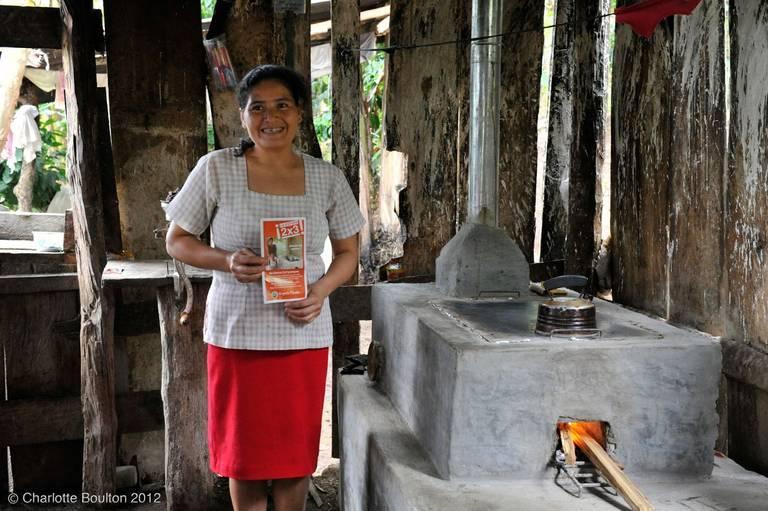

In 1998, when Hurricane Mitch devastated Honduras, Dee and Richard Lawrence, along with their daughter Skye, headed south, to help with the country's recovery efforts and wound up starting a cookstove project that greatly reduces carbon pollution. Eighteen years later, the Lawrences founded Cool Effect to fund carbon-reducing projects around the world.
Taking a step back, it was during their time in Honduras that 14-year-old Skye made the connection between the respiratory issues Honduran children were facing and their unhealthy living conditions, due to poor ventilation in a family’s home while cooking. This discovery led the Lawrence family to implement a new cooktop stove system; a stove which is more energy efficient, and better for everyone's health. This was the beginning of Proyecto Mirador, a clean cookstove carbon offset initiative, which paved the way for Cool Effect.
Salesforce, the world’s leading cloud provider, is now operating as a net zero company thanks in part to their partnership with Cool Effect and Proyecto Mirador. Sunya Ojure, Senior Manager, Sustainability at Salesforce explained why this partnership works: “Cool Effect shares our core value of innovation and enables our employees and customers to also get involved by making carbon offsets approachable.”
Carbon offset projects like Proyecto Mirador are an opportunity for individuals and companies to help reduce their carbon footprint. Every dollar counts, but it’s comprehensive partnerships like the one Cool Effect has with Salesforce that create an ecosystem that accounts for carbon properly. Purchasing carbon offsets is a key element in Salesforce’s sustainability strategy. Their commitment to offsets allowed the company to become net- zero emissions 33 years ahead of schedule. “Operating as a net-zero company puts an internal price on our greenhouse gas emissions,” explained Ojure. “It creates a financial incentive to support decisions throughout the business that avoid and reduce carbon emissions, from specifying high efficiency IT equipment to bringing about low-carbon, renewable energy to support the business.”
She goes on to say, “achieving net-zero greenhouse gas emissions was an important milestone in our ongoing sustainability journey and reflects our sense of urgency for addressing climate change and publicly upholding our environmental values.”
Not only does the Salesforce partnership help fund Proyecto Mirador, the Salesforce team is quite proud that the Salesforce platform is also being used to help with the project’s efficiency. Every Proyecto Mirador technician has a smartphone that they use to collect household data on every stove. They know where each of their stoves is located and who’s using them. “Before using the Salesforce platform, Mirador was building fewer than 5,000 stoves per year. After implementing Salesforce, they’ve more than quadrupled their output, building and installing more than 20,000 stoves in 2016 alone. It’s an incredible feeling to know that we are making an environmental impact, while also supporting a project that improves human health and creates local jobs,” explains Ojure.
Organizations like Cool Effect provide companies and individuals alike a way to fight against climate change, they have given companies like Salesforce a tangible way to quantify their impact company-wide, and to truly work in communities around the world. Recognizing their leadership in their industry and in business today, Ojure describes why sustainability is so important to the company:
“Sustainability is important to Salesforce because we consider the environment to be one of our key stakeholders. The cloud runs on electricity, which today relies predominantly on fossil fuels, a major source of global emissions. As a cloud leader, we have a responsibility to act. Moreover, climate change impacts everyone--every individual, company, city, and nation. Its effects are compounded in the world’s poorest regions, amplifying global inequality. Equality is a core value at Salesforce; we’re committed to harnessing our culture of innovation to fight climate change and drive toward equality for all.”It’s innovative organizations like Cool Effect that are creating the opportunity for us all to fight against climate change in a very practical way. Whether large companies are spending thousands of dollars on carbon offsets, or everyday people choose the $10.98 per tonne option, it makes a difference. Although we can’t outrun the next superstorm, we can work to combat the issues that will fuel it.
A Year in CSR: The Top 10 Trends of 2017
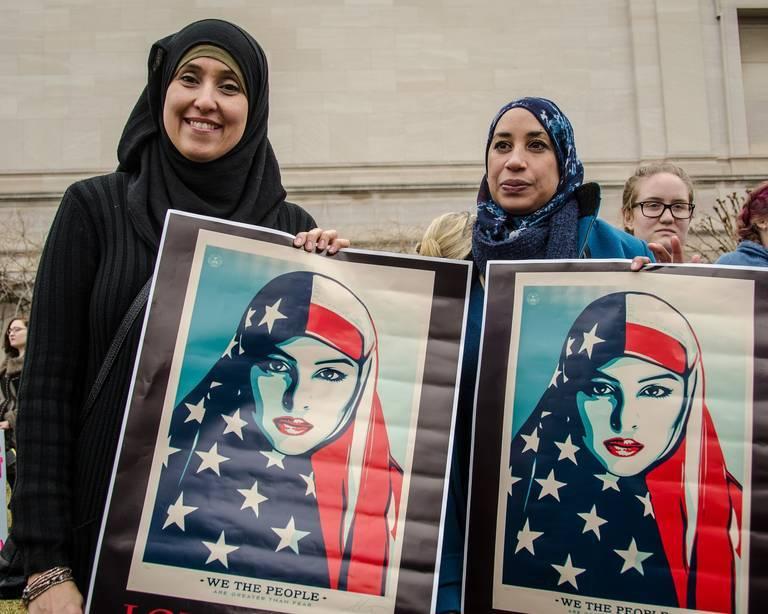

By Alison DaSilva, Executive Vice President, Cone Communications
As we look back on the past 365 days, there’s no denying we live in tumultuous times. 2017 was rife with political and social divide, unrelenting extreme weather and disasters, unconscionable violence and global strife in many forms. To most, the outlook may be bleak.
Our research confirmed a growing sense of unease. Conducted in early 2017, we found that 67 percent of Americans believe progress on social and environmental issues will be slowed in the absence of government regulation.
But rather than a negative, we believe this presents not only a major opportunity, but also a mandate for companies. In fact, nearly two-thirds (63 percent) of Americans are hopeful business will take the lead to drive critical social and environmental change. In the past year, we’ve seen companies take this challenge and run – with compelling campaigns standing up for social justice issues, companies tackling disaster relief in new and effective ways and organizations sparking conversations on sometimes uncomfortable topics. We believe we will look back at 2017 not as the year of inaction, but the moment business took the plunge – going all in on comprehensive and compelling corporate social responsibility (CSR) initiatives.
As the year draws to a close, Cone Communications, evaluated a year's worth of CSR trends to bring you the top 10 trends of 2017:
- Standing Up for Social Injustices: It’s safe to say companies vocally supporting social justice issues was the biggest trend of 2017 with companies of all sizes standing up for oftentimes divisive topics. IBM supported “Dreamers” in the U.S. threatened by the repeal of the Deferred Action for Childhood Arrivals (DACA) program by first issuing a tweet of support, then following up with a dedicated section of its website sharing stories of its own employees who benefited from the DACA program and provide critical value to IBM through the work they do every day.
- Creating Value by Closing the Loop: While closing the loop is nothing new for veteran CSR companies, what is new is how companies are bringing shoppers into the fold with consumer-facing activations. Vodka company 42Below collected used lemons from bars across Australia and New Zealand, transforming waste into soap through a proprietary process, then installed the soap in participating bars free of charge with signage about the initiative. Meanwhile, Timberland* built upon its ongoing work in Haiti to transform plastic bottles collected from the streets of the island country into fabric that is used in shoes, t-shirts and bags through a partnership with Certified B Corporation Thread.
- Bold Stunts to Take a Stand: In 2017 we saw many companies raise awareness – and eyebrows – with bold stunts for critical or underrepresented issues. KIND Snacks brought to life just how much sugar American children eat every five minutes by dumping 45,485 pounds of sugar right in the middle of Times Square in New York City. UNICEF also took to the streets of New York driving around 27 empty buses during the U.N. General Assembly to drive awareness for the lack of education in war zones. Burger King shocked fans by taking its iconic King mascot to the barber – shaving his full beard and mustache for Movember.
- Opening Eyes and Sparking Conversations: In these complex times, it can be difficult to have honest and safe conversations around hot button topics. Heineken created an equal playing field by inviting two strangers with opposing viewpoints to build a bar together. Then, at the end of the video, Heineken reveals their differences but asks if they’d like to have a conversation to learn more over a beer. Meanwhile, Vicks sparked a dialogue on the rights of transgender individuals in India through a powerful ad sharing the story of Gayatri who was adopted by her transgender “mummy,” showing “motherhood has no gender.” Google armed individuals to have their own educated conversations on the crisis in Syria through an interactive website.
- Cross-Company Collaboration: Many of today’s pressing issues are simply too complex to solve alone. Here, we’ve seen traction of companies – and competitors – partnering to advance whole-scale change. Danone and Nestle joined forces to form the Natur’ALL Bottle Alliance with research company Origin Materials, with a goal to commercialize a 100 percent bio-based and recyclable PET bottle. P&G and Whirlpool partnered to create a comprehensive disaster relief solution on the ground after a series of earthquakes in Italy, with P&G providing detergent while Whirlpool provided the washing machines, dryers and irons in 10 mobile laundry containers.
- Activism Spurs Results: With trending hashtag campaigns and marches on the street, individual activism gained traction like never before in 2017. As a result, many companies found themselves under the microscope, forcing operational changes and greater transparency. Uber was the focus of criticism earlier this year for a number of reasons, including allegations of workplace sexual harassment. As a result, Uber released its first ever Diversity Report, acknowledging its shortfalls and the road ahead. Nike found itself the target of a Georgetown student campaign around unfair labor practices. After months of discussions, Georgetown and Nike negotiated a new licensing agreement, conceding to allow the Worker Rights Consortium to access Nike factories.
- Industries Leading on Key Issues: Acknowledging the power of strength in numbers, companies in specific industries have begun to band together to accelerate progress on shared issues. The food and beverage industry has aggressively tackled transparency in 2017, with major players like Hershey, Panera and Giant arming consumers with additional information. The outdoor industry has raised the rallying cry to support America’s parks and major players in the advertising world have committed to “banishing stereotypical portrayals of gender” in ads as part of the global Unstereotype Alliance.
- Cause Shifts to Broader Purpose: Notably absent from the CSR landscape this year was the focus on moment-in-time activations. Although Breast Cancer Awareness Month was once par for the course for many brands; in 2017, it was barely a blip on the cause marketer’s radar. So too with back to school campaigns.
- Women’s Equality and Empowerment Goes Viral: What started with January’s 2.6 million-person global Woman’s March, only continued to grow in momentum on International Women’s Day and massive support for the #MeToo movement. Brands joined the conversation as well, with REI creating a 360-degree campaign in support of women in the outdoors with “Force of Nature.” For International Women’s Day, United Colors of Benetton tackled gender inequalities in India with the #UnitedbyHalf campaign, reinforcing that no gender is a better or worse half and that “every person deserves their share of what life has to offer.”
- Companies Leverage Unique Assets for Disaster Relief: From Hurricanes Harvey, Irma and Maria, to widespread forest fire devastation in California, the strength and pace of natural disasters in the U.S. seemed unrelenting. Recognizing the urgent need for support, companies immediately opened their purse strings donating more than $383 million for relief, according to the U.S. Chamber of Commerce Foundation. Others rightly looked to solutions aligning with their core competencies. As the largest airline in Puerto Rico, JetBlue launched the multifaceted 100x35JetBlue effort which included airlifting supplies to the island while capping one-way airfare at $135 with waived bag fees, plus seats on relief flights for emergency personnel and relief workers. Electric car company Tesla worked with local government officials to restore power to San Juan’s Hospital del Niño in addition to deploying six new battery projects on the islands of Vieques and Culebra as part of an ongoing effort. Meanwhile, car sharing company Turo offered free access to Turo cars for those affected by the North Bay wildfires.
As we enter 2018, we look forward to seeing more companies go all-in on CSR – leading with values while proving the business case for addressing critical issues.
*Cone client
As executive vice president and leader of Cone's award-winning Corporate Social Responsibility practice, Alison’s expertise spans strategic planning and goal setting, reporting, social impact, employee engagement, public/private partnerships, stakeholder engagement and sustainability communications. She is also leads Cone’s groundbreaking CSR Research & Insights, tracking and identifying trends to keep clients on the leading edge within the rapidly evolving space.
Image credit: Cone Communications
Dell Launches World’s First Ocean Plastics Supply Chain
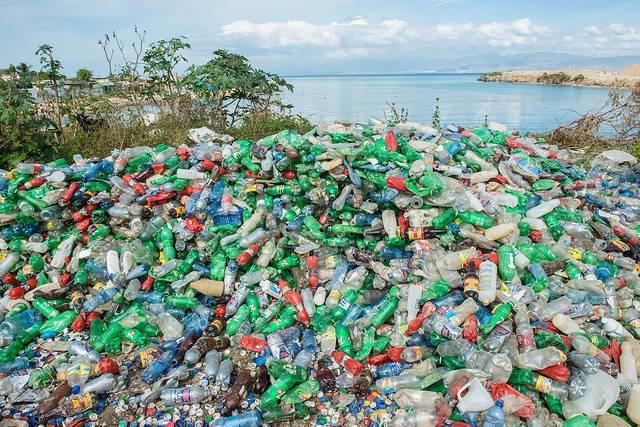

Today, Dell announced that it will work with several of the world’s leading brands to develop what it describes as the world’s first commercial-scale, ocean-bound plastics supply chain. Companies like Adidas might quibble with that claim, but we see it as good news all around.
Beyond simply collecting plastic, this program includes an education program that seeks to heighten awareness about the dangers plastic impose on oceans and marine life. In addition, each company participating in this initiative, named NextWave, has pledged to reduce its plastic footprint while reducing or eliminating consumption of single-use and non-recyclable plastics.
Brands participating in NextWave include General Motors, Herman Miller, Interface and Trek Bikes. UN Environment and the NGO Lonely Whale are also participating in this initiative.
For Dell, this program builds upon the several years of work it has invested in creating more sustainable and recyclable packaging, as well as striving to achieve a more closed-loop system within its supply chain.
On its own web site, Dell has projected statistics that suggest over 86 million tons, or 5 trillion pieces of plastic, are currently in the world’s oceans. Estimates suggest about 8 million tons of plastic waste wash up in oceans – an amount that could increase to 150 million tons by 2025. By mid-century, there could be more plastics in the world’s oceans than fish.
The organizations coalescing around the NextWave initiative suggest that if their plan succeeds, they could prevent 3 million pounds of plastics from entering the oceans by 2023 – the equivalent of eliminating 66 million water bottles from ending up at sea. That is a relatively small drop in the morass of ocean plastic that is ruining oceans, but if similar efforts can continue to launch worldwide, marine ecosystems may actually stand a chance in the long run.
Dell says the origin of this program lies into the relationship it developed with Lonely Whale back in 2015. That partnership eventually led to an ocean plastics recycling program the company started in February. For that pilot project, salvaged ocean plastic has been blended with other recycled plastic resins to mold trays used for shipping. The company concluded that during 2017, this program will prevent 16,000 pounds of plastic from entering oceans.
These programs are additional steps Dell says is it taking with a goal to only use 100 percent sustainable packaging by 2020. According to the company, Dell is the only computer hardware manufacturer to offer computers and monitors made out of both recycled e-waste plastics and carbon fiber.
The organizations participating in NextWave insist their cooperation can help move industry closer to a circular economy.
“I am so proud to see our partnership with Dell continue to grow and inspire companies across industries to use their capabilities to address ocean health,” said Adrian Grenier, founder of Lonely Whale. “This is no individual company’s problem; this impacts every human being and company, and it is incredible to see these industry leaders coming together.”
Image credit: Dell/Flickr
Alaska Wildlife Open for Drilling; Tepid Demand from Big Oil


Petroleum is finally beginning to relax its grip on the global economy. One sign is the raft of new investments in renewable energy by leading oil and gas companies. Some have even been selling off their assets in the ultimate "carbon bomb," Canadian oil sands. In the latest sign of a tipping point, last week the U.S. tried -- and all but failed -- to auction off 900 parcels of land for oil and gas development in the federal National Petroleum Reserve on Alaska’s North Slope.
Not too long ago an auction like that would have touched off a veritable gold rush of eager bidders. Now it looks like the lack of interest could ripple into the Trump administration's plans for drilling in ANWR, the Arctic National Wildlife Reserve.
Cricket chirps for the Alaska oil auction
The Washington Post has an in-depth analysis of last Wednesday's Alaska oil lease auction. Do read the piece for full details, but for those of you on the go reporter
In contrast, the Trump administration's proposal to open up the Arctic National Wildlife Refuge for oil development has touched off a firestorm of controversy. The Republican-controlled U.S. Congress followed up with bills in both the House and Senate permitting Alaska oil development in ANWR, as part of the new Republican tax plan.
So, is ANWR safe?
The short answer is that ANWR could be safe, at least for the foreseeable future, judging by the response to the new lease auction.
As described by Grandoni, last week's auction pulled in just seven bids that cumulatively didn't even cover 1 percent of the offered land.
To put that in terms of acreage, the Bureau of Land Management put up a total of more than 10 million acres for oil rights, but just under 80,000 acres received bids.
It's possible that objections from environmental organizations helped to dampen the interest. The leases were within Alaska's National Petroleum Reserve, but the name is a bit misleading. The legal framework that established the Reserve provided for environmental protection as well as energy development. That makes NPR drilling a sensitive issue, even when it's not in the full glare of the media spotlight.
On the other hand, simple bottom line factors may also be at play. The seven new leases adjoin existing leases, indicating that some drillers are only willing to sink money into property that already has the necessary infrastructure at hand. That doesn't bode well for ANWR development.
Here's a Bureau of Land Management official cited by Grandoni:
“I really can't speculate on why interest varies from year to year...It is important to note that the further west you travel in the NPR-A [National Petroleum Reserve - Alaska] there is currently a lack of infrastructure to support development. All of the leases sold yesterday adjoin current leases.”
Another factor could be that drilling for oil on the North Slope is just not what it used to be. According to our friends over at Wikipedia, oil development in the North Slope began in the late 1960s and has been in steady decline since production peaked in the late 1980s.
In 2010 Reuters noted that the rate of decline in Alaska oil production could begin to slow, but since then it's been a seesaw. With competition from the shale gas boom in full swing by 2013, Business Insider saw signs of a "major decline" for the North Slope. Just last year, though, an apparent "mega-discovery" raised hopes again.
Who wants oil in ANWR?
For now, the failed lease auction could provide some ammunition to the ANWR protection side. After all, it's harder to justify establishing new oil fields if the existing ones still have plenty of availability.
Further dampening interest in ANWR is the prospect that legal challenges will exacerbate the "high-risk 'frontier'" nature of development.
One potential suitor for ANWR development could be ConocoPhillips, but even that appears to be a longshot.
In partnership with Andarko, ConocoPhillips was the only company to bid on last week's lease auction, which explains why it won all seven leases.
On the other hand, ConocoPhillips is one of the major oil companies (including ExxonMobil) rushing to downgrade or divest Canadian oils sands assets in recent months, so it's not obvious that the company would be eager to jump into another incendiary and high-profile endeavor.
Photo: Madhav Pai/flickr.
From Romania to Costa Rica: The Persuasive Power of Green Mortgages


By Rebecca Menes
There are two homes across the street from each other and both are for sale. They look the same, except one costs more than the other. As a buyer, which would you choose? Obviously, you would choose the less expensive one.
Now look more closely. The more expensive home has outdoor shading on the windows, and a solar hot water collector on top. The real estate agent says the home has thermal insulation, energy-efficient lighting, and hardware to conserve water, and is certified green. Now which would you buy?
Perform a few calculations and you’ll figure out that the pricier home is to your advantage, because the extra cost of the mortgage is more than compensated for by lower utility bills. This is particularly true in a cold country like Romania or a hot country like Costa Rica.
There are groups working behind the scenes in these two countries to create a new kind of mortgage that upends the industry, making it a given to choose a green home. While the models differ, they both result in a triple win where the developer offers a better product, the bank takes on less risk, and the buyer keeps more earned income.
Less risk in Romania
The Romania Green Building Council (RoGBC) has made critical progress in shifting homebuyers’ thinking towards green mortgages. Because green homes cost slightly more, buyers can take on a larger loan but make a lower payment, due to a combination of utility savings and a better mortgage rate. In other words, the more attractive monthly outlay wins against the immediacy of a lower sales price. (See infographic.)
Steven Borncamp, an adviser to the RoGBC, recognized the failure of homebuyers to consider “total cost of ownership.” He discovered the national regulatory authority allows green homebuyers to count estimated energy savings as an additional source of income in loan applications. It was a critical factor in the development of RoGBC’s “Green Homes and Green Mortgages” program.
Raiffeisen Romania (an affiliate of the Austrian banking group) is the first to participate in the program, which is open to all banks who offer a lower mortgage rate to qualified applicants. A homebuyer finances the developer’s extra costs to build and certify green through an elevated sales price – without increasing their monthly home ownership costs.
Developers now have more wiggle room to invest in a superior product that is tied to a better mortgage rate, providing the critical stimulus needed to redirect the construction industry towards higher performing buildings. While homes must meet RoGBC’s stringent requirements for energy and other green criteria, certification costs are kept low by utilizing the energy audit work required in Romania. RoGBC also accepts projects that score significantly in other internationally-recognized certification systems, such as EDGE, LEED, and BREEAM.
Borncamp says that participating banks will not only experience greater profitability due to lower risk, they will also benefit reputationally by upholding a higher performance standard for their lending. Green mortgages create greater trust between banks and buyers, who often underinvest in construction due to a fear of taking on debt.
“The wisdom of borrowing sensibly to build correctly pays for itself even without a reduced interest rate for green homes,” says Borncamp. “That green homes can generate annual energy savings in excess of a monthly mortgage payment has positive implications for reducing risk. This will be a game-changer when more banks start adopting it.”
Multilateral support in Costa Rica
On the other side of the world, Banco Promerica has middle-class mortgages down to a science. With such a successful conventional loan offering, why would Promerica be interested in exploring a green mortgage concept?
This is where Michelle Espinach, Promerica’s Sustainable Bank Manager, steps in. Espinach has succeeded in offering homeowners favorable conditions for green mortgages through a partnership with FMO, the Dutch development bank. Since mortgages in Costa Rica are mainly given by public banks, Banco Promerica must be faster, offer better terms, and provide better service, in order to grow its small share of the market and expand its mortgage portfolio (currently 10 percent of its business).
“We have an opportunity to do something really big,” says Espinach. “Our first projects, which will be certified with IFC’s EDGE by the Green Building Council Costa Rica, will be deep green. Once these projects come onto the market in 2019, they will influence other developers.”
Costa Rica has a tricky economy because of the mix of U.S. dollars and local currency. Mortgages are typically fixed rate for only two years. While salaries are paid in colones, buyers prefer a mortgage in dollars, which is a more stable currency. Banco Promerica accessed funding from a warehouse facility provided by FMO that enables the bank to offer mortgages with attractive rates in U.S. dollars – a coveted offering for a private bank in Costa Rica. In turn, FMO fulfills its mission to make a difference in people’s lives and help mitigate climate change. (See infographic.)
While the cost of certification will be passed from developer to buyer, Espinach doesn’t believe buyers in Costa Rica are willing to absorb the developer’s extra capital costs for going green. The developer needs “some kind of candy,” says Espinach, as in a better construction financing rate. This puts her back at the multilateral doorstep to develop another financial product to help reduce these costs.
With the progress she’s already made, it’s hard to imagine Espinach not succeeding. “Hopefully, our projects will change the way construction is approached in Costa Rica,” she declares. “Everyone will want to build green.”
Rebecca Menes is the Global Marketing Lead for IFC’s EDGE green buildings certification program, which is available in more than 130 markets, including Romania and Costa Rica.
Houses image credit: Flickr / Woodleywonderworks
Headshots and graphs credit: IFC